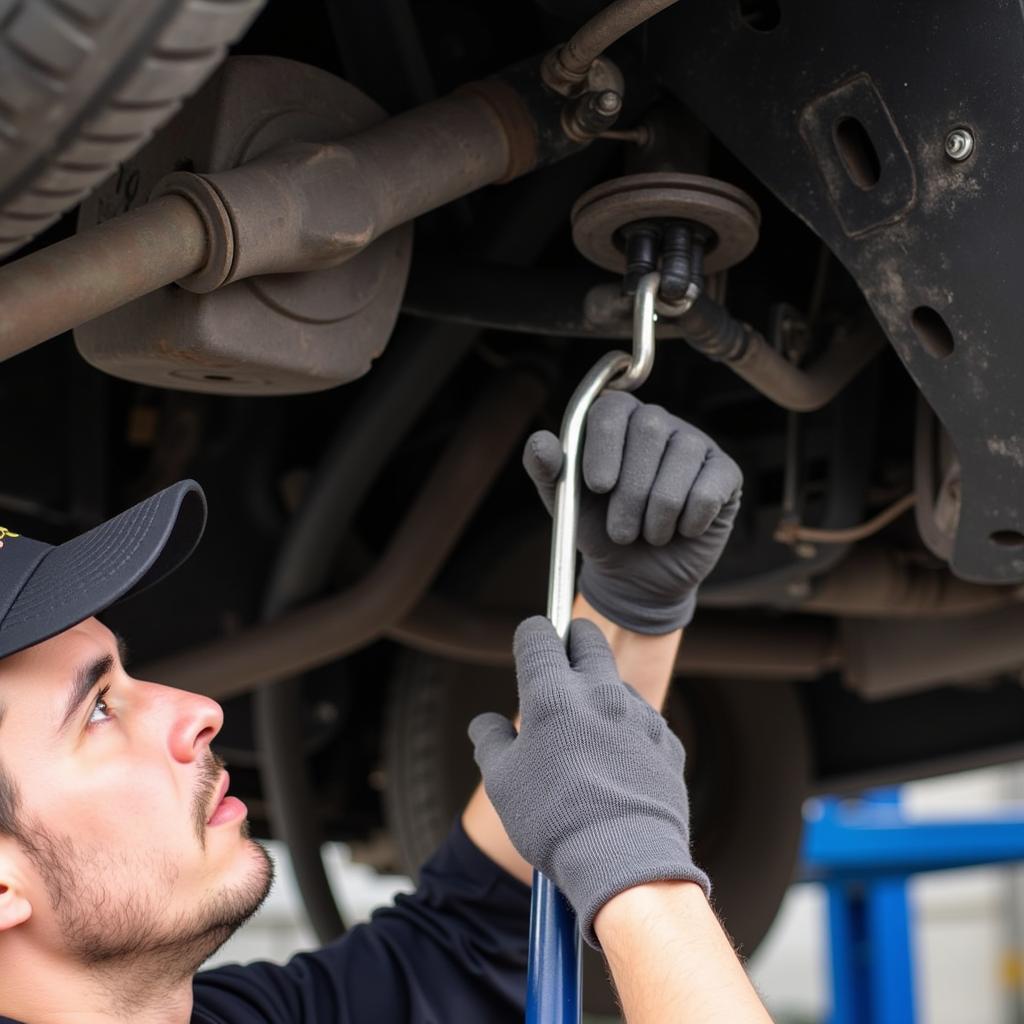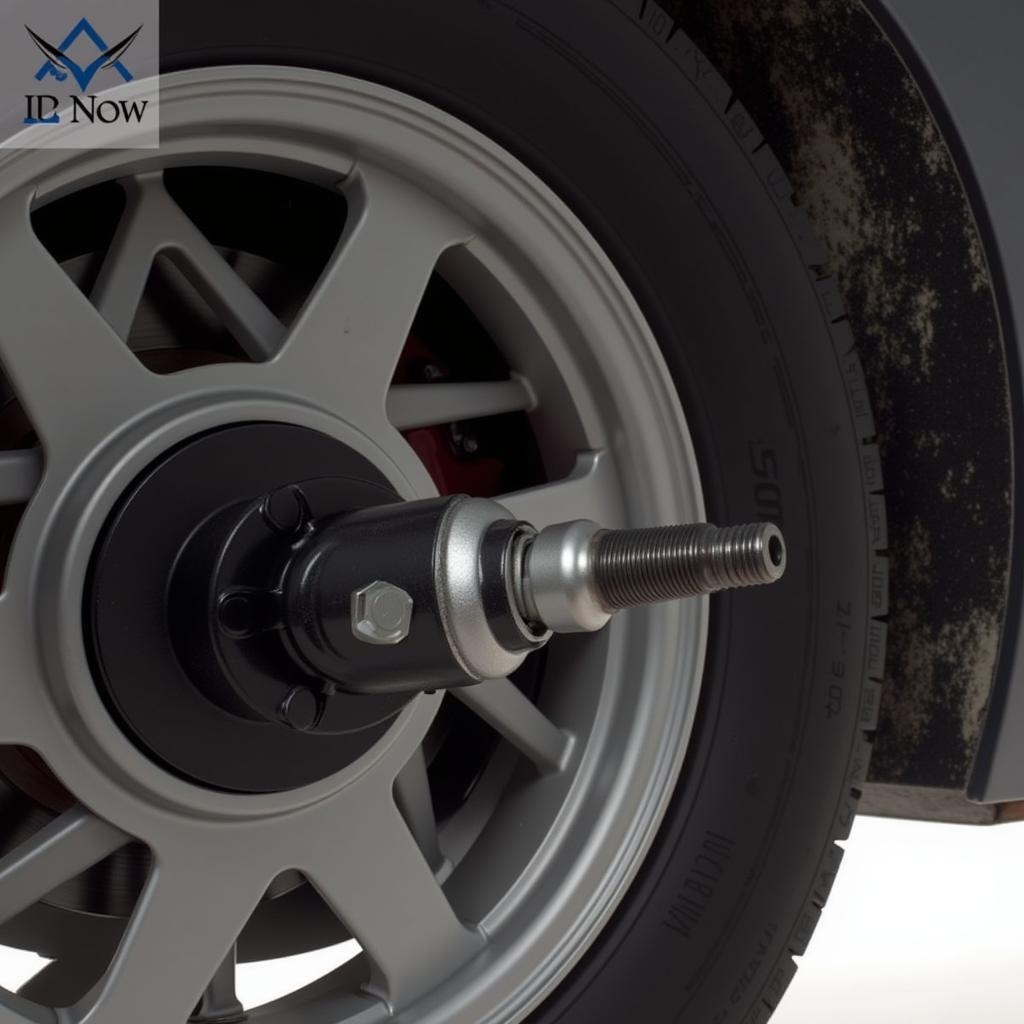Car Tie Rod Problems can significantly impact your vehicle’s steering and overall safety. Understanding the function of tie rods, recognizing the symptoms of potential issues, and knowing how to address them is crucial for every car owner and mechanic. This guide provides a comprehensive overview of car tie rod problems, equipping you with the knowledge to diagnose and resolve them effectively.
If you’re experiencing steering issues, it might be related to tie rod problems in cars. Check out this helpful resource to learn more.
What are Tie Rods and Why are They Important?
Tie rods are essential components of your car’s steering system. They connect the steering rack to the steering knuckles, which in turn control the wheels. This connection allows you to turn the wheels and control the direction of your vehicle. Without properly functioning tie rods, steering becomes imprecise, unpredictable, and potentially dangerous.
Recognizing the Symptoms of Car Tie Rod Problems
Several signs indicate potential car tie rod problems. Being aware of these symptoms can help you catch the issue early and prevent further damage. Common symptoms include:
- Uneven tire wear: Noticeable wear on the inside or outside edges of your tires can be a sign of misalignment caused by faulty tie rods.
- Steering wheel vibration: A vibrating steering wheel, particularly at higher speeds, can indicate worn or loose tie rods.
- Clunking or knocking sounds: Sounds coming from the front end, especially when turning or driving over bumps, could be due to worn tie rod ends.
- Loose steering: If your steering feels sloppy or unresponsive, it’s a strong indication of a problem within the steering system, possibly including the tie rods.
- Vehicle pulling to one side: When your car drifts to one side without steering input, it may signify uneven pressure in the tie rods.
Diagnosing Car Tie Rod Problems
Diagnosing car tie rod problems involves a few key steps. First, visually inspect the tie rods for any signs of damage, such as bent rods, torn boots, or excessive play in the joints. Next, check for play in the steering wheel. Excessive movement without corresponding wheel movement indicates a potential issue. Finally, a professional wheel alignment check can confirm if the tie rods are contributing to misalignment.
Do you need help troubleshooting other car problems? Learn about common car issues and their solutions, like 99 Club Car charging problems.
How to Fix Car Tie Rod Problems
Once you’ve diagnosed a tie rod problem, the solution typically involves replacing the damaged components. While it’s possible to replace tie rod ends yourself if you have mechanical experience, it’s generally recommended to have a qualified mechanic perform the repair. This ensures proper installation and alignment, crucial for safe and reliable steering.
 Mechanic Replacing a Car Tie Rod
Mechanic Replacing a Car Tie Rod
Preventing Car Tie Rod Problems
Regular maintenance is key to preventing car tie rod problems. Having your car’s alignment checked periodically can help identify potential issues early. Avoiding potholes and other road hazards can also minimize wear and tear on your tie rods.
“Regular inspections and timely maintenance can save you from costly repairs down the road,” advises John Miller, a seasoned automotive technician with over 20 years of experience.
Why Are My Tie Rods Wearing Out So Fast?
Several factors can contribute to premature tie rod wear. Driving on rough roads, hitting potholes, and improper wheel alignment can all accelerate the wear and tear on these critical components.
How Much Does it Cost to Fix a Tie Rod?
The cost of fixing a tie rod varies depending on the make and model of your vehicle and the labor rates in your area. Typically, the cost ranges from $150 to $400 per tie rod, including parts and labor.
“Don’t ignore the signs of a bad tie rod. Addressing the issue promptly can prevent further damage and ensure your safety on the road,” warns Maria Sanchez, a certified automotive instructor.
Understanding self-driving car problems can also be insightful. Learn more about the challenges faced by autonomous vehicles.
Conclusion
Car tie rod problems can compromise your vehicle’s safety and handling. By recognizing the symptoms, understanding the diagnosis process, and knowing the repair options, you can ensure your car’s steering system remains in optimal condition. Don’t hesitate to contact a qualified mechanic for assistance with any car tie rod problems.
For expert advice and assistance with your car tie rod problems or other automotive issues, contact AutoTipPro at +1 (641) 206-8880 or visit our office at 500 N St Mary’s St, San Antonio, TX 78205, United States.
 Newly Installed Tie Rod
Newly Installed Tie Rod
If you are having trouble with a squealing cold engine, you might want to check out troubleshoot car problem squealing cold engine for some helpful tips. Also, if you are curious about the problem with chips for cars, you can find more information here.




Leave a Reply